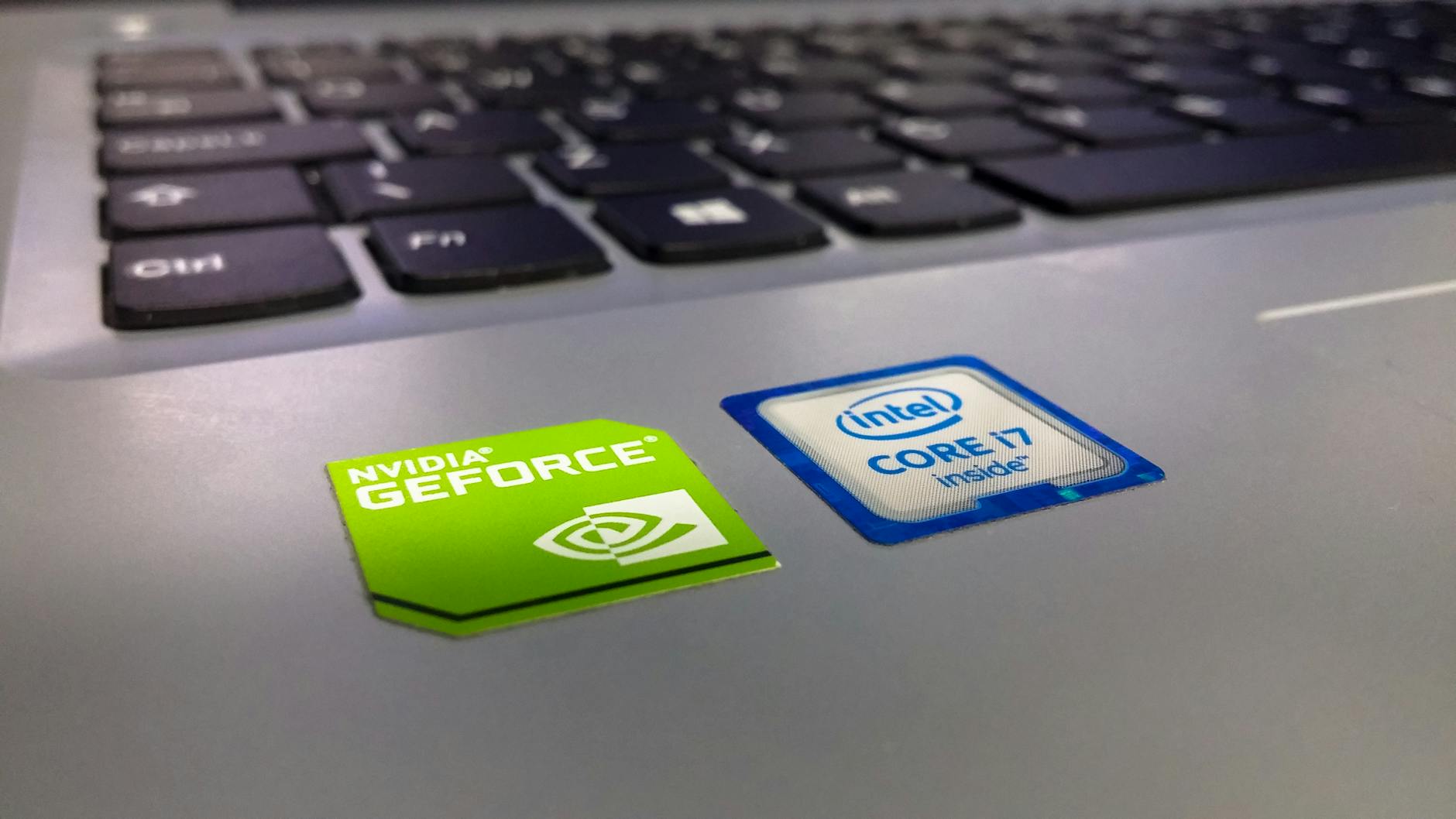The Digital Knock: When Your MFA Becomes a Target
Unpacking the Rise of MFA-Bombing and What It Means for Your Online Security
The digital world is a constant dance between innovation and evolving threats. For many, multi-factor authentication (MFA) has become the bedrock of online security, an extra layer of defense against unauthorized access. Yet, as with any security measure, determined actors are finding new ways to exploit and circumvent even these robust systems. One such emerging tactic is known as “MFA-bombing,” a sophisticated phishing technique that leverages the very authentication process designed to protect users, turning a user’s convenience into a vector for potential compromise. This article delves into the nature of MFA-bombing, its implications, and how individuals and organizations can fortify their defenses against this increasingly prevalent threat.
The term itself, MFA-bombing, evokes a sense of overwhelming and persistent assault. It’s not a brute-force attack in the traditional sense, nor is it a direct password breach. Instead, it capitalizes on the ubiquity and, at times, the intrusive nature of MFA prompts in our daily digital lives. Imagine waking up to a barrage of authentication requests from services you haven’t actively used, a situation that recently befell a cybersecurity professional and served as a stark reminder of this evolving threat landscape. This experience, shared via a SANS Institute diary entry, highlighted a critical vulnerability: when an attacker obtains even a single valid username and password, they can initiate a wave of MFA requests, hoping to wear down the user into inadvertently approving a malicious login. This tactic, while seemingly simple, is rooted in a deep understanding of human psychology and the operational realities of modern digital services.
Context & Background
Multi-factor authentication, often abbreviated as MFA, is a security process that requires users to provide two or more verification factors to gain access to a resource such as an online account. These factors are typically categorized into three types: something you know (e.g., password, PIN), something you have (e.g., a physical security key, a mobile phone), and something you are (e.g., fingerprint, facial recognition). By requiring a combination of these, MFA significantly enhances security beyond single-factor authentication, which relies solely on a password.
The widespread adoption of MFA has been a crucial step in combating credential stuffing attacks and reducing the impact of data breaches. Services like Google, Microsoft, Apple, and countless others now strongly encourage, or even mandate, MFA for account security. This has led to a situation where many users are accustomed to receiving occasional MFA prompts, often for logins from new devices or locations. This very familiarity, however, is what attackers are now exploiting.
The genesis of MFA-bombing can be traced to the broader trend of sophisticated social engineering attacks. Attackers are continually refining their methods to bypass technical security controls by targeting the human element. Phishing, for instance, has evolved from crude emails with generic requests for information to highly personalized and targeted campaigns. MFA-bombing can be seen as an evolution of these tactics, specifically designed to overwhelm the user’s ability to discern legitimate requests from malicious ones. The attack is often initiated after an attacker has successfully acquired a user’s username and password through a separate data breach or phishing campaign. Once they have this initial credential, they can then trigger an MFA flood.
The SANS Institute diary entry that brought this issue to wider attention described a scenario where the author received multiple Microsoft MFA prompts overnight. The immediate reaction was to dismiss them as the user had just woken up and hadn’t initiated any logins. However, the realization that this meant a compromised password, and the inability to identify the source of the compromised credential, underscored the insidious nature of this attack. The attacker isn’t necessarily trying to get the user to click a malicious link or enter their password into a fake website at this stage. Instead, they are playing a waiting game, hoping the user, perhaps in a groggy state or simply wanting to clear notifications, will eventually approve one of the many prompts, thereby granting the attacker access.
The effectiveness of MFA-bombing relies on a few key psychological principles. Firstly, it leverages the user’s desire to maintain access and avoid security disruptions. If a user is repeatedly asked to authenticate, they might become frustrated or simply want the notifications to stop. Secondly, it exploits the fatigue that can set in when dealing with numerous security alerts. The sheer volume of prompts can desensitize the user to their significance, making them more likely to approve a prompt without careful consideration. Finally, the attacker’s goal is to force a moment of inattention or a lapse in judgment, which is more likely to occur when a user is busy, distracted, or trying to manage a flood of notifications.
Understanding the history of phishing and social engineering is crucial to grasping the context of MFA-bombing. Early phishing attacks were relatively unsophisticated, often involving generic emails asking for personal information. As users became more aware of these threats, attackers shifted to more targeted approaches. Spear-phishing, for instance, involves tailoring messages to specific individuals or organizations, often using information gleaned from social media or previous breaches. MFA-bombing represents a further refinement, moving beyond direct deception to a tactic of overwhelming the user’s defenses through persistent, albeit seemingly benign, notifications.
Furthermore, the increasing reliance on cloud services and single sign-on (SSO) platforms by many organizations makes MFA-bombing a particularly potent threat. If an attacker can gain access to a user’s primary account, especially one linked to an SSO provider, they may be able to unlock access to a multitude of other connected services. This highlights the critical importance of securing foundational accounts and understanding the interconnectedness of digital identities.
In-Depth Analysis
The mechanics of an MFA-bombing attack, while seemingly straightforward, involve a calculated strategy to exploit user behavior and system design. The process typically unfolds in several stages:
- Credential Acquisition: The initial step for an attacker is to obtain a valid username and password for a target account. This is often achieved through various means, including:
- Data Breaches: Exploiting publicly available lists of compromised credentials from previous data breaches. Many users reuse passwords across multiple websites, making a breach on one site a potential gateway to others. Have I Been Pwned is a crucial resource for checking if your credentials have been exposed in known breaches.
- Phishing Campaigns: Tricking users into entering their credentials on fake login pages that mimic legitimate services. These can be highly convincing and often target specific individuals or organizations. The Cybersecurity and Infrastructure Security Agency (CISA) provides extensive resources on identifying and reporting phishing attempts.
- Keyloggers or Malware: Installing software on a user’s device that records keystrokes or intercepts login information.
- Initiating MFA Flood: Once the attacker has a valid username and password, they will attempt to log in to the targeted service. For each failed login attempt (or in some cases, even successful ones that are quickly abandoned), the service will typically trigger an MFA prompt to the user’s registered device (e.g., via SMS, authenticator app notification, or phone call). The attacker will repeatedly initiate these login attempts, creating a cascade of MFA requests directed at the victim.
- Exploiting User Fatigue and Error: This is the crucial psychological phase of the attack. The attacker is not looking for an immediate response. Instead, they are banking on the sheer volume of notifications to:
- Overwhelm the User: The constant pings and pop-ups can be incredibly annoying and disruptive. A user may feel pressured to “just get it over with” by approving a prompt to stop the incessant notifications.
- Cause Accidental Approval: In a distracted state, a user might glance at a prompt, see their username, and quickly tap “Approve” without verifying the device or location details. The attacker is betting on this moment of inattention.
- Obscure Malicious Activity: If the user has genuinely forgotten a legitimate login, or if their device is experiencing other notification issues, a flood of MFA prompts could make it difficult to distinguish a real threat from benign background noise.
- Gaining Access: If the user inadvertently approves an MFA prompt, the attacker successfully bypasses the second layer of security and gains unauthorized access to the account. From there, they can proceed with their malicious objectives, such as stealing sensitive data, conducting fraudulent transactions, or using the account to launch further attacks.
The technical implementation of MFA-bombing can vary. For instance, an attacker might use automated scripts to rapidly cycle through login attempts. The “bombing” aspect refers to the sheer volume of notifications generated. Companies like Microsoft, with their Azure Active Directory and Microsoft Authenticator app, are prime targets due to their widespread use in enterprise environments. A successful MFA-bombing attack on a Microsoft account can potentially unlock access to a vast array of services, including Office 365, OneDrive, and other cloud-based resources. The Microsoft documentation on how MFA works provides insight into the systems being targeted.
The effectiveness of this attack is amplified by the design of some MFA notification systems. For example, push notifications from authenticator apps often present a simple “Approve” or “Deny” option, with minimal contextual information visible at a glance. While this is designed for user convenience, it also provides a narrow window for attackers to exploit. Some systems have started to include more contextual information, such as the location or device attempting to log in, which can help users identify suspicious requests. However, the core vulnerability remains the potential for human error under duress.
It’s also important to distinguish MFA-bombing from other forms of credential compromise. Unlike a direct credential stuffing attack where the attacker simply tries the stolen password, MFA-bombing actively engages the user in the authentication process. This makes it a more sophisticated and potentially harder-to-detect attack vector, as the initial “event” is the user approving a legitimate-looking MFA prompt, rather than a direct system bypass.
The psychological warfare aspect of MFA-bombing is a critical component. Attackers are essentially weaponizing user annoyance and cognitive load. By creating a situation where the user is constantly interrupted and potentially frustrated, they increase the likelihood of an accidental approval. This taps into fundamental aspects of human-computer interaction and security awareness. The fact that the SANS diary entry came from a security professional highlights that even those with a deep understanding of cybersecurity are not immune to these psychological pressures.
Pros and Cons
From the perspective of an attacker, MFA-bombing presents several distinct advantages:
Pros for Attackers
- High Success Rate (Potentially): By targeting user psychology and fatigue, attackers can achieve success even without sophisticated technical bypasses. A single moment of inattention can be enough.
- Leverages Existing Weaknesses: The attack relies on the common practice of password reuse and the inherent human element in security.
- Difficult to Trace Back Initially: The initial phase involves legitimate-looking MFA prompts, making it harder for defenders to immediately identify the attack without user reporting or advanced monitoring.
- Scalable: Once a valid credential is obtained, the “bombing” can be automated and scaled to numerous targets or multiple times for a single target.
- Bypasses Traditional MFA Vigilance: Users who are diligent about MFA might still fall victim if overwhelmed by the sheer volume of prompts.
However, MFA-bombing also has significant drawbacks and limitations for attackers, and conversely, offers insights into defensive strategies:
Cons for Attackers and Defensive Considerations
- Requires Initial Credential Compromise: The attack cannot begin without first obtaining a username and password, which is a prerequisite that can be challenging.
- Relies on User Error: The success hinges on the user making a mistake, which is not guaranteed. Some users are highly vigilant.
- Can Trigger Alerts: Repeated failed login attempts or an unusual pattern of MFA approvals might still trigger automated security alerts within an organization’s systems. Security monitoring is vital for detecting such anomalies.
- Service Providers Can Implement Rate Limiting/Blockers: Cloud providers and security platforms are increasingly aware of these tactics and may implement measures to detect and block rapid, repeated MFA requests.
- User Education Can Mitigate: Educating users about this specific threat can significantly reduce its effectiveness. Awareness is a powerful defense.
Key Takeaways
- MFA-bombing is an attack that exploits the convenience and user fatigue associated with multi-factor authentication prompts.
- Attackers first obtain a valid username and password, then repeatedly trigger MFA requests to overwhelm the user into approving a malicious login.
- The attack capitalizes on psychological factors like annoyance, distraction, and the desire to stop intrusive notifications.
- Successful execution requires initial credential compromise, often through data breaches or phishing.
- While designed for convenience, the simplicity of some MFA approval interfaces can be exploited.
- Vigilance, awareness of unusual notification patterns, and a thorough verification process before approving any MFA prompt are crucial defenses.
- Organizations should implement security monitoring to detect abnormal MFA request patterns.
Future Outlook
As MFA-bombing tactics become more recognized, we can anticipate a multi-pronged response from both security researchers and technology providers. Service providers are likely to enhance the security features surrounding MFA prompts. This could include:
- Richer Context in Prompts: More detailed information about the login attempt, such as the precise geographical location, the device type, and even the browser used, will likely be displayed more prominently within the MFA notification itself. This allows users to make more informed decisions.
- Time-Based Limits and Frequency Caps: Systems might implement stricter limits on how frequently MFA prompts can be generated from a single compromised credential. If an account triggers an unusual number of MFA requests in a short period, it could be temporarily locked or require additional verification steps.
- Behavioral Analysis: Advanced security systems will increasingly rely on behavioral analytics. If a user’s login patterns suddenly change dramatically, or if MFA approvals occur at unusual times or from unusual locations, the system might flag this for further investigation.
- Enhanced User Education Tools: Cybersecurity awareness training will likely incorporate specific modules on MFA-bombing and similar social engineering tactics to better equip users.
- Stronger Resistance to Automated Attacks: Implementations of “captcha”-like challenges or other bot-deterring mechanisms could be integrated into the MFA process for high-risk login attempts.
However, the arms race between attackers and defenders is perpetual. As MFA systems evolve, attackers will undoubtedly seek new vulnerabilities or refine existing methods. This could include more sophisticated social engineering to trick users into revealing MFA codes or exploiting zero-day vulnerabilities in authentication protocols. The continued focus on multi-layered security, combining technical controls with robust user education, will remain paramount.
The trend towards passwordless authentication, utilizing biometrics or FIDO security keys, might offer a more resilient long-term solution against many credential-based attacks, including MFA-bombing. However, widespread adoption of these technologies will take time, and for the foreseeable future, MFA will remain a critical, albeit evolving, component of online security. The key will be in how effectively it is implemented and how well users are educated to interact with it safely.
Call to Action
The threat of MFA-bombing is a stark reminder that robust security requires a combination of technological safeguards and informed user behavior. Here are concrete steps individuals and organizations can take:
For Individuals:
- Treat Every MFA Prompt with Suspicion: Never approve an MFA prompt unless you are actively initiating a login. Do not approve prompts simply to stop notifications.
- Verify Details Carefully: Before approving, check the associated device, location, and time of the login attempt. If anything seems unfamiliar, deny the prompt.
- Do Not Reuse Passwords: Use unique, strong passwords for every online account. A password manager can significantly help with this. The Electronic Frontier Foundation (EFF) offers guidance on choosing password managers.
- Enable MFA Wherever Possible: Continue to use MFA for all your online accounts. It remains a vital security layer.
- Be Wary of Unexpected Notifications: If you receive multiple MFA prompts for an account you haven’t accessed recently, it’s a strong indicator of a compromised credential.
- Report Suspicious Activity: If you suspect your account has been compromised or you’re experiencing unusual MFA activity, report it to the service provider immediately.
For Organizations:
- Mandate and Enforce MFA: Ensure that MFA is enabled and enforced for all user accounts, especially for privileged access and remote connections.
- Implement Robust Security Monitoring: Deploy systems that can detect unusual patterns of MFA requests, such as a high volume of requests from a single IP address or for a single user.
- Educate Employees Regularly: Conduct ongoing cybersecurity awareness training that specifically addresses social engineering tactics like MFA-bombing. Simulate phishing attacks and MFA prompt scenarios to test user response.
- Review MFA Implementation: Ensure your MFA solution provides sufficient context in prompts and consider implementing stricter policies for suspicious login attempts. Explore advanced features like conditional access policies that can dynamically adjust authentication requirements based on risk. Microsoft’s Conditional Access is a prime example of such a system.
- Secure Primary Accounts: Recognize that compromising a single, widely used account can have cascading effects. Focus on securing foundational accounts that grant access to multiple services.
- Consider Advanced Authentication Methods: For critical systems, explore phishing-resistant authentication methods like FIDO2 security keys or certificate-based authentication. The FIDO Alliance is a leading organization in passwordless authentication standards.
By staying informed and taking proactive steps, we can collectively build a more resilient digital environment against evolving threats like MFA-bombing, ensuring that the tools designed to protect us remain effective safeguards in our increasingly interconnected world.









